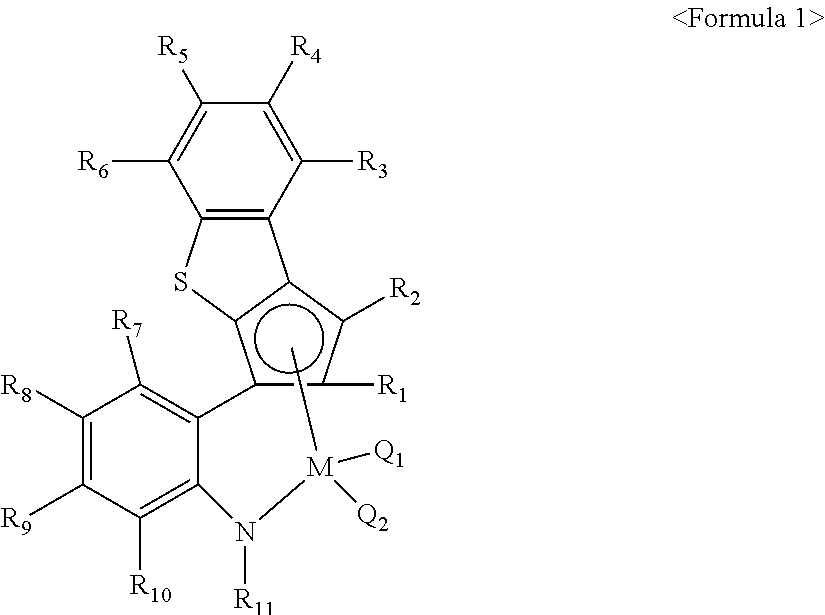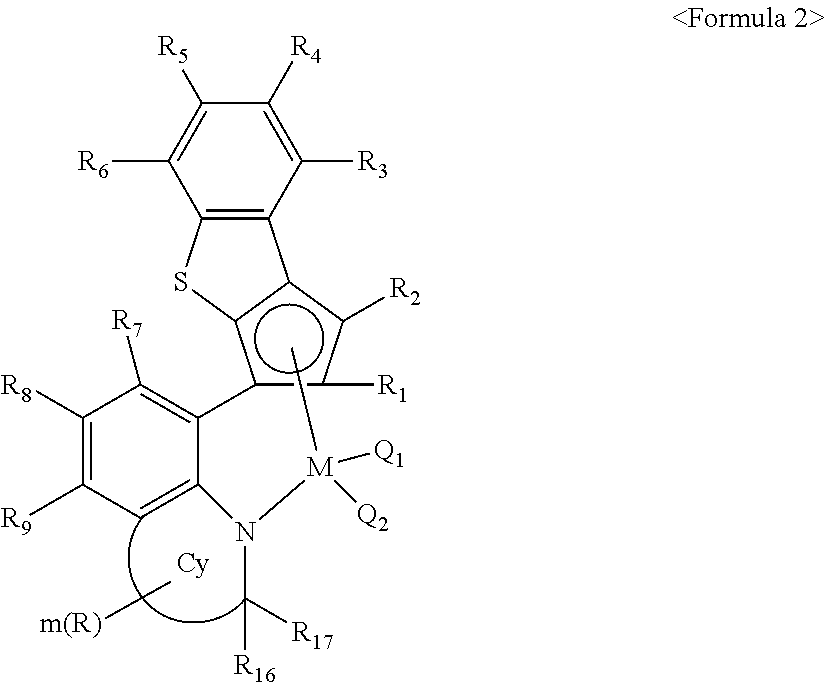Method of preparing olefin-based polymer and olefin-based polymer prepared thereby
a technology of olefin-based polymers and polymers, which is applied in the direction of physical/chemical process catalysts, organic compound/hydride/coordination complex catalysts, physical/chemical process catalysts, etc., can solve the problems of difficult preparation of an olefin-based polymer having appropriate properties according to use, the defect of deterioration of processability of the catalyst, and the lower activity of the catalyst, so as to improve the copolymerization properties and improve the effect of stabl
- Summary
- Abstract
- Description
- Claims
- Application Information
AI Technical Summary
Benefits of technology
Problems solved by technology
Method used
Image
Examples
preparation example 1
A 8-(1,2-dimethyl-1H-benzo[b]cyclopenta[d]thiophen-3-yl)-2-methyl-1,2,3,4-tetrahydroquinoline compound
[0176]
[0177]nBuLi (14.9 mmol, 1.1 eq) was slowly added drop by drop in a solution of 2-methyl-1,2,3,4-tetrahydroquinoline (2 g, 13.6 mmol) dissolved in 10 mL of ether at −40° C. The temperature was slowly elevated to room temperature, and the reaction mixture was stirred at room temperature for 4 hours. The temperature was lowered to −40° C. again and CO2(g) was inserted, and the reaction was maintained for 0.5 hours at a low temperature. The temperature was slowly elevated, and remaining CO2(g) was removed via a bubbler. THF (17.6 mmol, 1.4 ml) and tBuLi (10.4 mmol, 1.3 eq) were inserted in the reaction mixture at −20° C., following by aging at a low temperature at −20° C. for 2 hours. The ketone (1.9 g, 8.8 mmol) was dissolved in diethyl ether and slowly added drop by drop in the reaction mixture. After stirring at room temperature for 12 hours, 10 mL of water was inserted and hyd...
example 1
[0181]In a 1.5 L autoclave continuous process reactor, a hexane solvent and 1-octene were added, and the temperature of the upper end portion of the reactor was pre-heated to 160° C. A triisobutylaluminum compound, the metallocene compound thus obtained and dimethylanilinium tetrakis(pentafluorophenyl)borate cocatalyst were added in the reactor at the same time. Then, ethylene was inserted in the autoclave reactor, and the reaction mixture was maintained under the pressure of 89 bar at 160° C. for 30 minutes, and a copolymerization reaction was performed in a continuous process to produce a copolymer. After that, a remaining ethylene gas was exhausted out, and a polymer solution was dried in a vacuum oven and dried for at least 12 hours. Then, physical properties thereof were measured.
example 2
[0182]An olefin-based polymer was prepared by the same procedure described in the above Example 1 except for adding materials in conditions shown in the following Table 1.
PUM
| Property | Measurement | Unit |
|---|---|---|
| Density | aaaaa | aaaaa |
| Density | aaaaa | aaaaa |
| Molar mass | aaaaa | aaaaa |
Abstract
Description
Claims
Application Information
 Login to View More
Login to View More - R&D
- Intellectual Property
- Life Sciences
- Materials
- Tech Scout
- Unparalleled Data Quality
- Higher Quality Content
- 60% Fewer Hallucinations
Browse by: Latest US Patents, China's latest patents, Technical Efficacy Thesaurus, Application Domain, Technology Topic, Popular Technical Reports.
© 2025 PatSnap. All rights reserved.Legal|Privacy policy|Modern Slavery Act Transparency Statement|Sitemap|About US| Contact US: help@patsnap.com



